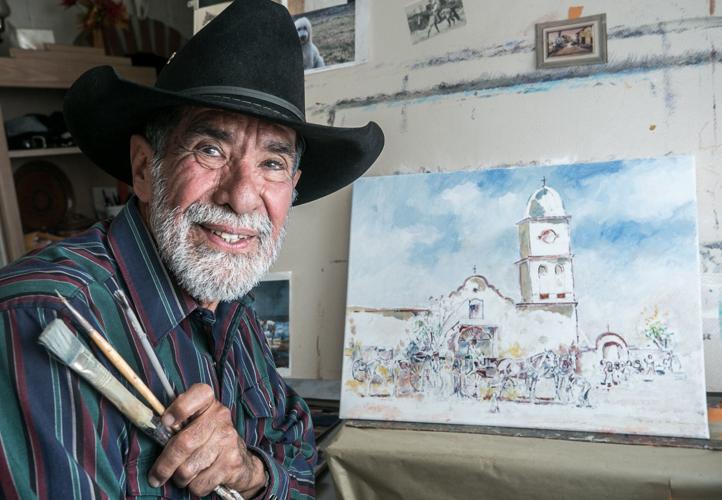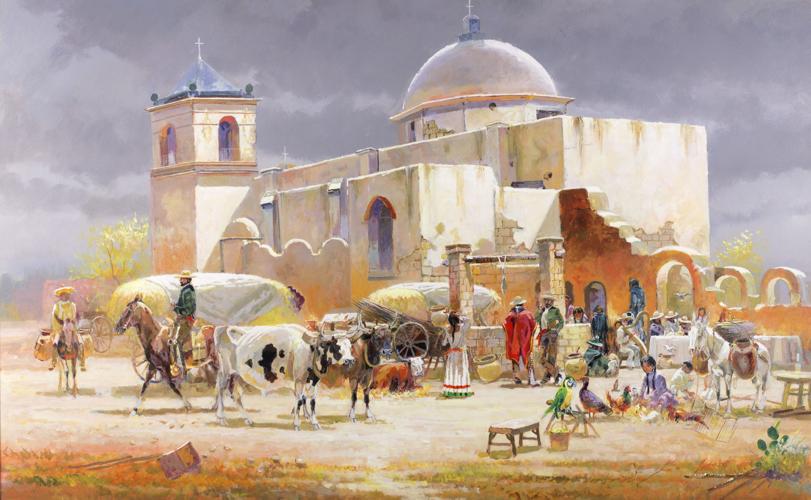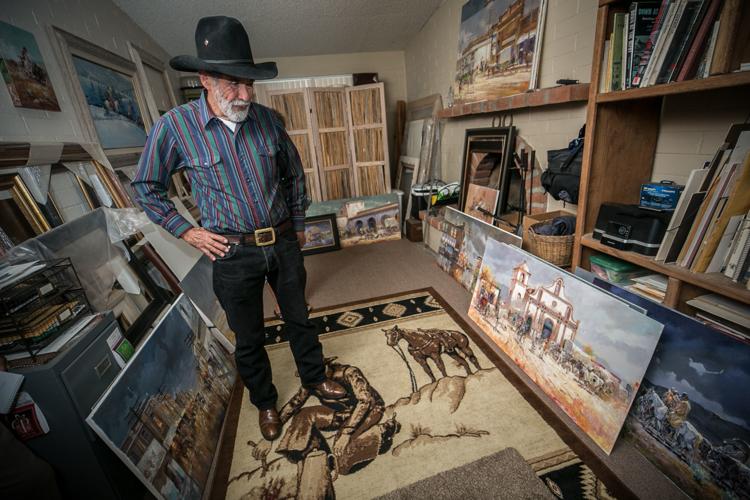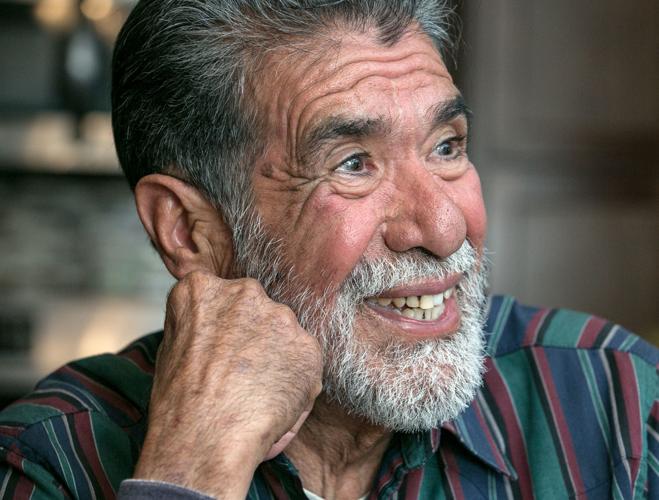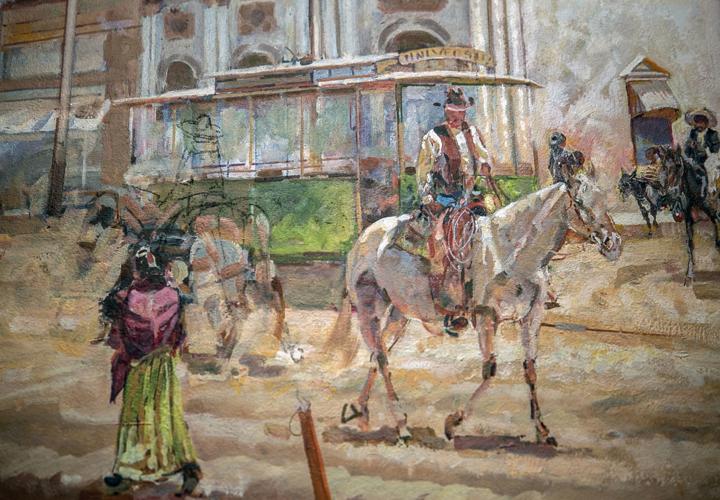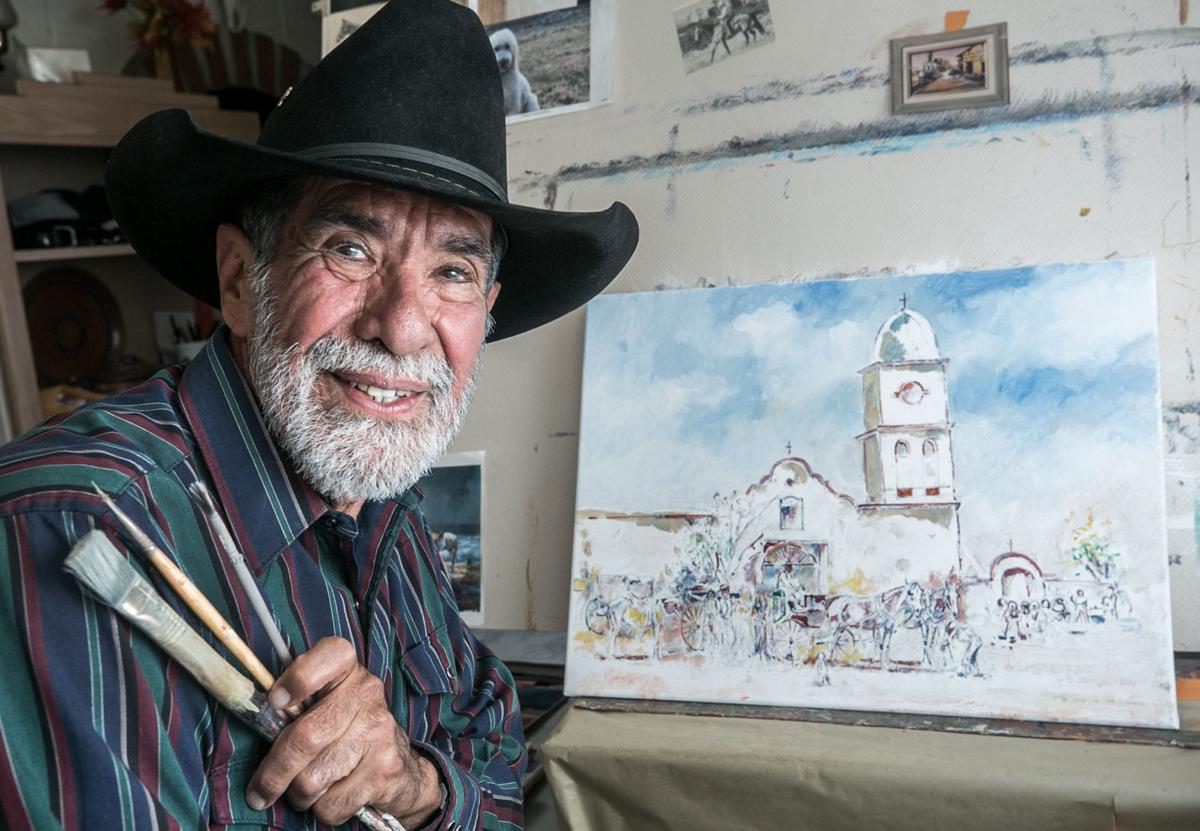When Santos Barbosa was drafted into the Army, the brass realized he had some talent: He could paint signs. He had been doing it for several years for an Oklahoma painting contractor when he came to Tucson for a job at Davis-Monthan Air Force Base in the mid-1960s.
Because of his painting ability, “I missed the plane to Vietnam,” said the Texas-born Barbosa. He was stationed in Hawaii, where he began to expand his painting skills to include portraiture. That brought him a little extra cash, which came in handy for him and his new bride, Tucson-born Mary Benites.
After his discharge, Barbosa returned to Tucson and found a painting job with the county, from which he retired in 2003. But wanting to go beyond creating signs or doing other mundane painting jobs, Barbosa began taking lessons — through mail order art school. He learned the fundamentals and it fueled his passion.

Artist Santos Barbosa in his home in Tucson, AZ on July 3, 2018. The Tucson Museum of Art has honored the local painter by acquiring one of his artworks. Barbosa, who lives on the south side near Kennedy Park, is a self-taught painter.
He painted. He learned. He painted more. At the same time he studied photographs and other artworks of his favorite subject — Western cowboys.
Today, one of Barbosa’s paintings hangs in the lobby of the Tucson Museum of Art, which acquired it last month through a donation. “Tiempos Pasados, San Antonio,” is a depiction of a typical day at the queen of the Texas Spanish colonial churches, Mission San José, during the colonial period.
The 75-year-old Barbosa, who toiled at his oil and acrylic artwork from his southwest-side home for more than 40 years, sold his first paintings at shopping malls and was named Artist of the Year 2017 by the Friends of Western Art, is more than pleased that one of his works will now be part of the Western art collection at the museum.
The self-taught artist is very proud and humble, too.
Christine C. Brindza, senior curator of art of the American West at the Tucson Museum of Art, said Barbosa’s work was accepted because of its qualities, representative of the region, and because the artist calls Tucson home. His style is unique, vibrant and whimsical, she said.
“He has a vivid imagination. He leaves the viewer to create their own stories,” Brindza said.

“Tiempos Pasados, San Antonio” now hangs in the lobby of the Tucson Museum of Art.
In “Tiempos Pasados,” more than a dozen people are gathered against the courtyard wall under a sky laden with thick, dark clouds. Two men are conversing, a horseman is riding away, a young girl in black braids tends to chickens, several musicians are playing, a woman in a long white dress with red and green borders is walking with a jug on her left shoulder. A white dove flies under an arch.
The bulk of his work evokes another time, centuries past. He joked, “I should have been born in the 1800s.”
He’s not sure when and why he fell in love with Western-themed art but it could have started when he lived in Oklahoma City and often visited the National Cowboy & Western Heritage Museum.
“I took everything in,” he said of the cowboy art created by artists such as Charles M. Russell, known as the Cowboy Artist, and Frederic Remington, painter and sculptor. “It’s something that really inspired me.”
His wife, Mary, said her husband lives to paint.
“He just loves what he does. He hasn’t left this room,” she said while we stood in Barbosa’s garage-converted studio in their Enchanted Hills home near Kennedy Park.

Santos Barbosa in his home studio’s converted carport, where he paints daily.
After years of selling his art during the weekends in local shopping malls and the Pima County Fair, where he won some awards, in the early ’80s his art began appearing at the Mountain Oyster Club and El Presidio Gallery. In 1992 he earned second place at a Western art show in Prescott. In won Best of Show at the 2011 Empire Ranch Show and the 2015 Arizona-Sonora Desert Museum-Four Corners Gallery Show.
His studio is filled with finished and uncompleted art pieces. Several bookshelves are crammed with books about art and Western history. He has boxes of photographs. He visits places — from Texas to Flagstaff — to draw inspiration and ideas. He’s also been on cattle drives, but his wife joked that his last one he made in a RV.
Barbosa said he doesn’t paint to sell. But when he does, ranchers and winter visitors are most likely to become enamored of a scene of cowboys in slickers caught in a rainstorm or a rain-splattered downtown Tucson in the late 1800s. Rain, cloudy stormy skies and lonely cowboys are his favorite subjects.
Of the hundreds of paintings he has created, I asked Barbosa which was one of his favorites. None of them, he said.
“The next one I’m going to paint,” he said, will be his favorite.

Artist Santos Barbosa has sketched another rider in this painting at his home studio in Tucson, AZ on July 3, 2018. He often works on paintings over the course of years, adding and changing before he is certain they are finished.


